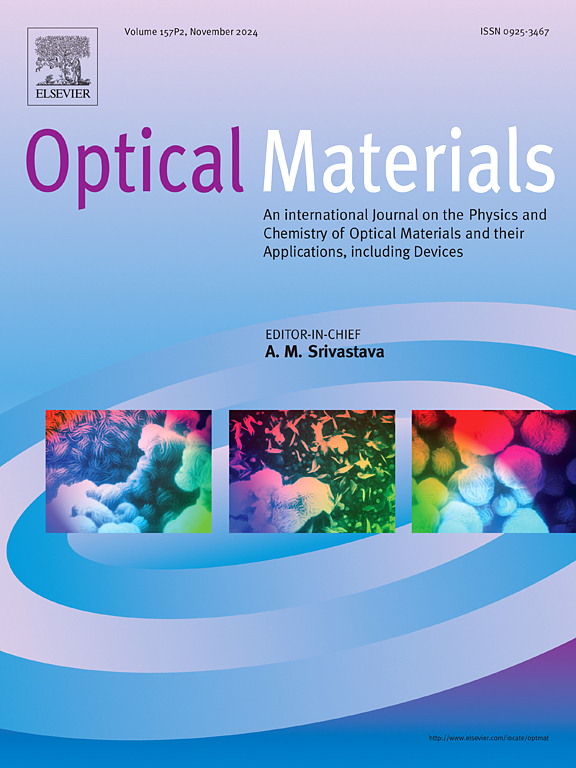抗反射理论在超透明wo3基电致变色薄膜设计中的应用
IF 3.8
3区 材料科学
Q2 MATERIALS SCIENCE, MULTIDISCIPLINARY
引用次数: 0
摘要
本研究利用增透理论设计了具有超高透光率的wo3基电致变色薄膜。结果表明,当WO3膜的厚度为539 nm时,薄膜在550 nm处的透过率可达90.08%,是我们所知的研究中最高的。在1000次循环后,薄膜也表现出良好的循环稳定性,光调制率损失仅为13%,电荷容量损失为31.54%。我们相信这一研究将为超高透过率电致变色薄膜的设计提供新的思路。本文章由计算机程序翻译,如有差异,请以英文原文为准。
Applying the antireflection theory in designing of ultra-transparent WO3-based electrochromic films
In this study, the antireflection theory is used to design WO3-based electrochromic films with ultra-high optical transmittance. The results show that transmittance of the films at wavelength of 550 nm could reach 90.08 % when the thickness of WO3 film is 539 nm which is the highest among previous studies to our knowledge. And at this time, the films also shows good cyclic stability with only 13 % optical modulation rate loss and 31.54 % charge capacity loss after 1000 cycles. We believe that this research would provide a new insight into design of electrochromic films with ultra-high optical transmittance.
求助全文
通过发布文献求助,成功后即可免费获取论文全文。
去求助
来源期刊

Optical Materials
工程技术-材料科学:综合
CiteScore
6.60
自引率
12.80%
发文量
1265
审稿时长
38 days
期刊介绍:
Optical Materials has an open access mirror journal Optical Materials: X, sharing the same aims and scope, editorial team, submission system and rigorous peer review.
The purpose of Optical Materials is to provide a means of communication and technology transfer between researchers who are interested in materials for potential device applications. The journal publishes original papers and review articles on the design, synthesis, characterisation and applications of optical materials.
OPTICAL MATERIALS focuses on:
• Optical Properties of Material Systems;
• The Materials Aspects of Optical Phenomena;
• The Materials Aspects of Devices and Applications.
Authors can submit separate research elements describing their data to Data in Brief and methods to Methods X.
 求助内容:
求助内容: 应助结果提醒方式:
应助结果提醒方式:


